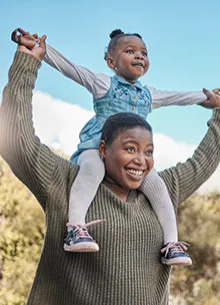Tips to teach your kids about money
- Video Transcript
Hi, my name is Jennifer and I'm your financial wellness teacher. Today we'll be discussing when and how to teach your children about money. Unfortunately, most people don't learn about personal finances until later in their lives. And, something I hear often from clients is, "I wish I would have learned sooner." Well, it's never to late to learn about it. But, if you really want to teach your children about money, it all really begins at home. And, the more comfortable you are about speaking to your child about money, the more confident they will be about money outside of the home.
I've decided to break this down into three different phases. The first is childhood, which is as early as pre-school and goes all the way up through elementary school. The second are your teenage years, which is middle school through high school. And, the third is young adulthood, which is college and beyond.
So, in childhood, when your child is old enough to count, you can start by introducing them to the concept of money. A great way to do this is to give them a treat, or a toy for doing good work or doing chores. Not only does this start to instill good work ethic, but it also teaches them that if you do something productive, they get a reward in return. As they get older, you can start to turn that toy or treat into an allowance and start introducing them to the concept of saving. A great way to teach them about savings is to use a clear jar for their allowance which allows them to visually see their money growing over time.
Lastly, you'll want to show them how money works and you can do this by taking money from the jar whenever you go to the store and let them see the prices of the different items and let them count the money to hand to the cashier. This approach also helps to teach them about opportunity costs, meaning "if I buy this. then I can't buy that."
The second phase is your teenage years. By this age, your child will be old enough to have a summer job, or maybe you're still giving them some sort of allowance. This is a great time to start introducing them to bank accounts and college savings. So, take them to the bank, help them open a savings or a checking account, and encourage them to start putting a portion of their paycheck or their allowance into this account. You should also encourage them to start using this money for some of their own expenses.
This will teach them how to start managing money and reinforce that you can't buy things if you don't have the money to pay for it. This is also a great time to introduce them to the concept of credit cards. They'll be adults soon and the moment they turn 18, they'll be bombarded with credit card offers.
One way to help teach them about credit cards, is to add them as an authorized user to your credit card and give them a spending limit. This will help teach the responsibility of paying back borrowed money, and also the cost of interest if they don't. This is also a great way to help them build their credit scores. With the use of bank accounts and credit cards, you are also teaching them about budgeting. You know, once upon a time we used to use hand written ledgers, but now technology has created tons of budgeting apps that can help them keep track of their weekly and monthly income and expenses.
Budgeting also teaches them about expenses that they have probably never thought of before like a cell phone bill, food, and gas. Budgeting is also a good habit to have when they're entering their young adult years.
The last phase is young adulthood and by this age your child is either in college or starting their first full-time job. This is a great time to have a conversation about employer benefits and investing. 401k plans and pension plans are great benefits offered by most companies. You can teach them that, saving money into these vehicles also helps them save for retirement and also lowers their taxable income.
A lot of these plans also have employer matching, which is free money to take advantage of. A benefit plan is also a good way to start teaching them about investing. I encourage you to sit down with your child and walk through the different types of funds they can use to invest in.
I know this was a lot of information to digest, but the main thing I'd like you to take away is that a healthy example starts in the home. If you don't feel like you're qualified to discuss some of these tips with your child, I recommend speaking with a financial professional to help walk you through the basics. Your child with thank you for helping them set good habits for the future.
My name is Jennifer and thanks for joining me for teaching kids about money. I hope this information helps you and your child on your financial journeys and helps set your child up for financial success.




